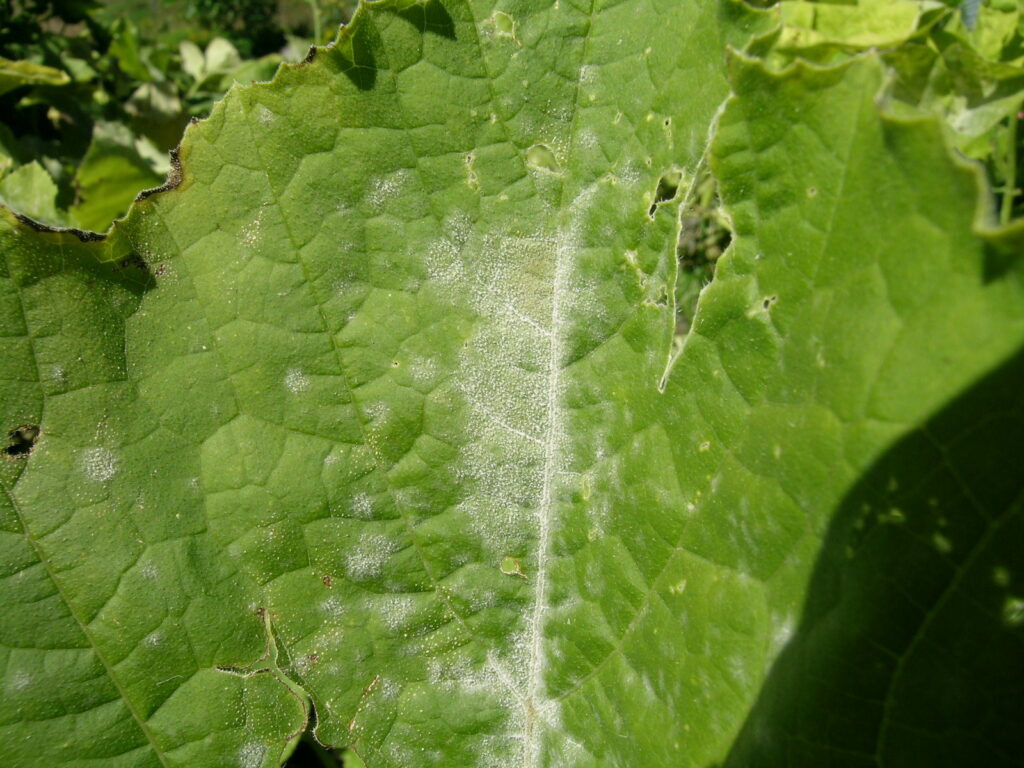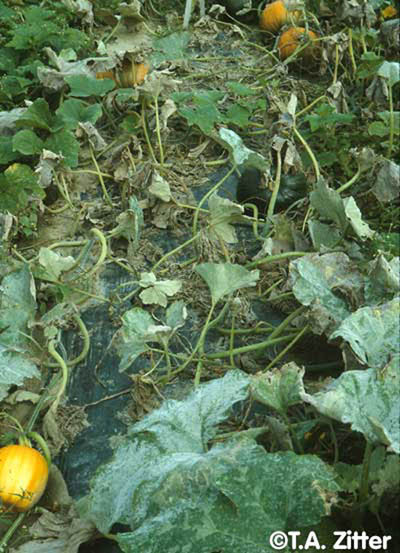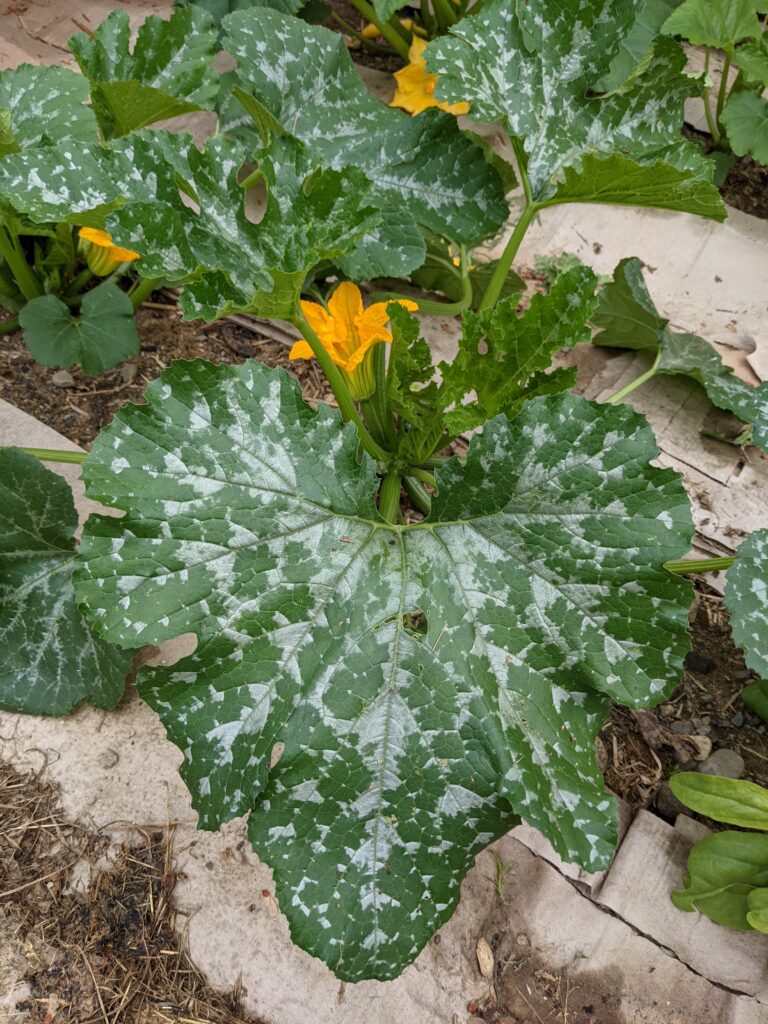
Disease: Powdery Mildew of Cucurbits (Podosphaera xanthii and Erysiphe cichoracearum)
Pest/disease identification and lifecycle, most common damage symptoms and crops affected:
Management options:
Powdery mildew is a common disease of pumpkins and winter squash. All cucurbits are susceptible, but many common cucumber and melon varieties have had powdery mildew resistance bred into them. The disease can cause infected leaves to die prematurely, reducing yields and lowering fruit quality, especially taste. Winter squash from diseased plants won’t store as long as fruits from healthy plants. If conditions do not favor the disease’s development until later in the season, you may not need any control; but if conditions are conducive to powdery mildew in early to midsummer, you may want to employ some management strategies or you may have no leaves by mid-August, or bland, starchy squash come harvest.

Cultural:
It’s good to scout regularly. Check upper and lower leaf surfaces of older plants every few days starting in the early summer. The first symptoms usually are white, powdery fungal patches on the undersides of older leaves. Yellow spots may form opposite these, on the upper leaf surfaces.
Unlike many fungal diseases, powdery mildew does not require liquid water to infect leaves and thrives in humid conditions. Anything to improve airflow around plants is helpful in reducing the disease’s infection success.

Pesticides approved for use in certified organic production (as a last resort):
No products with systemic activity (products that move through the plant) are approved for organic production, and applying fungicide to the lower leaf surface is difficult. In experiments, foliar applications of sulfur (such as Microthiol Disperss) have been more effective than most other organic products for powdery mildew — apparently because sulfur deposited on the upper leaf surface can volatilize and be redistributed to the lower surface. Sulfur can be phytotoxic, however — especially if applied when temperatures are hot, or to particularly sensitive crops like melons.
There are some products made from potassium bicarbonate (Kaligreen and MilStop are two of these) that can have good efficacy. For a discussion of these, including efficacy, see the “Resource Guide to Organic Insect and Disease Management.” A potassium bicarbonate product combined with a horticultural oil (such as JMS Stylet-Oil) has been shown to be more effective than either product alone. Several bio-fungicide products are available as well.

Home gardeners often report success with milk or baking soda sprays, but neither of these materials would be allowed for use on a commercial farm as there are no EPA-registered fungicides containing them. Baking soda (sodium bicarbonate) performs essentially the same protective role as potassium bicarbonate products commercially available to farmers, because the bicarbonate half of the molecule is what is raising the pH of the leaf surface and preventing powdery mildew from being able to successfully infect it.
All of these materials work best when applied prior to infection, preventing spores from germinating and penetrating the leaf surface. On small scales it is possibly helpful to combine a protective spray with the removal of older infected leaves to reduce disease inoculum.
Please note: This information is for educational purposes. Any reference to commercial products, trade or brand names is for information only, and no endorsement or approval is intended. Pesticide registration status, approval for use in organic production and other aspects of labeling may change after the date of this writing. It is always best practice to check on a pesticide’s registration status with your state’s board of pesticide control, and for certified organic commercial producers to update their certification specialist if they are planning to use a material that is not already listed on their organic system plan. The use of any pesticide material, even those approved for use in organic production, carries risk — be sure to read and follow all label instructions. The label is the law. Pesticides labeled for home garden use are often not allowed for use in commercial production unless stated as such on the label.

